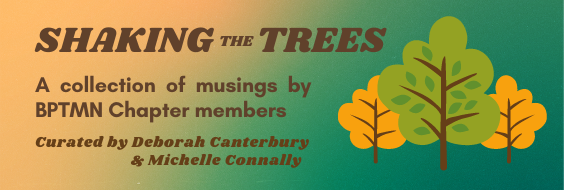John W. Garbutt, 2019
I struggled on how to approach doing an article for the newsletter. I initially wanted to do one on ducks and the seasonal shift that brings them down in autumn. I also switched the theme from my enjoyment of them, my approach to photographing them, and interspersing information about the ducks into the text. After countless rewrites, this is mostly just the facts Joe Friday style.
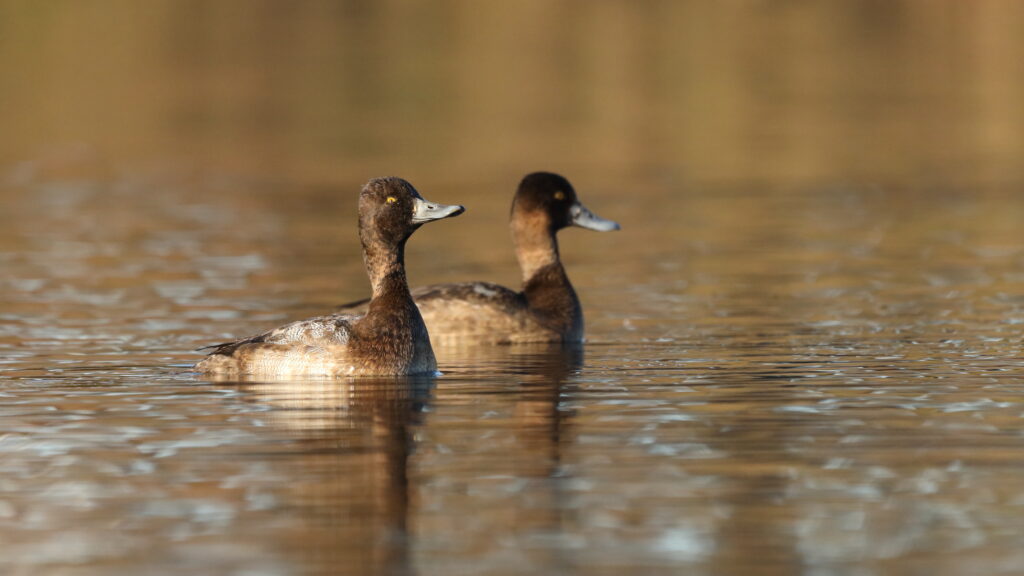
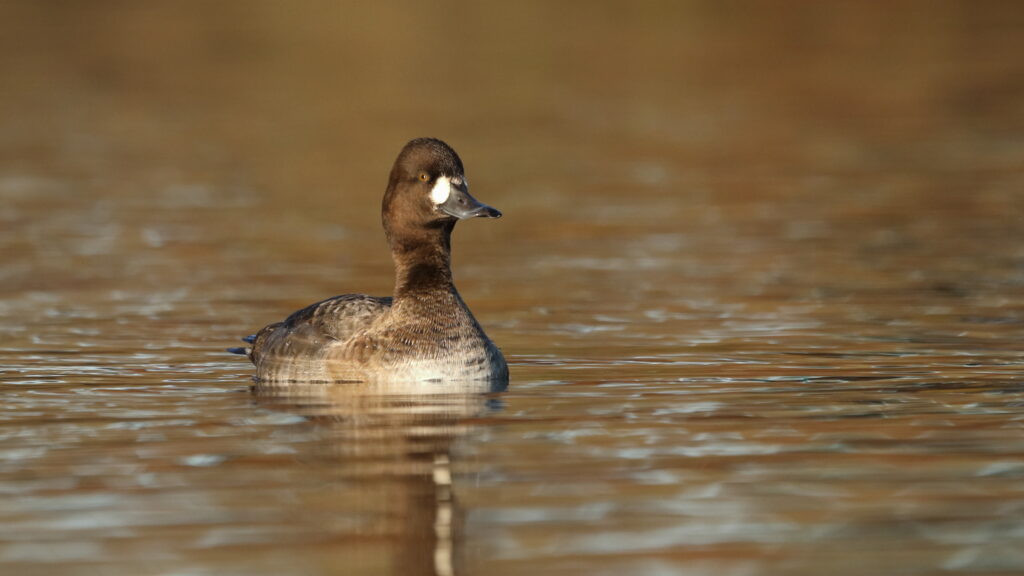
After breeding in the boreal forest of North America, Lesser Scaup are amongst the latest arrivals south and the female of the species is my favorite duck to photograph.
A group of female scaup were calling, and displaying neck-stretching and chin-lifting. This behavior is more typical during the end of spring migration when pair bonds are formed with males.
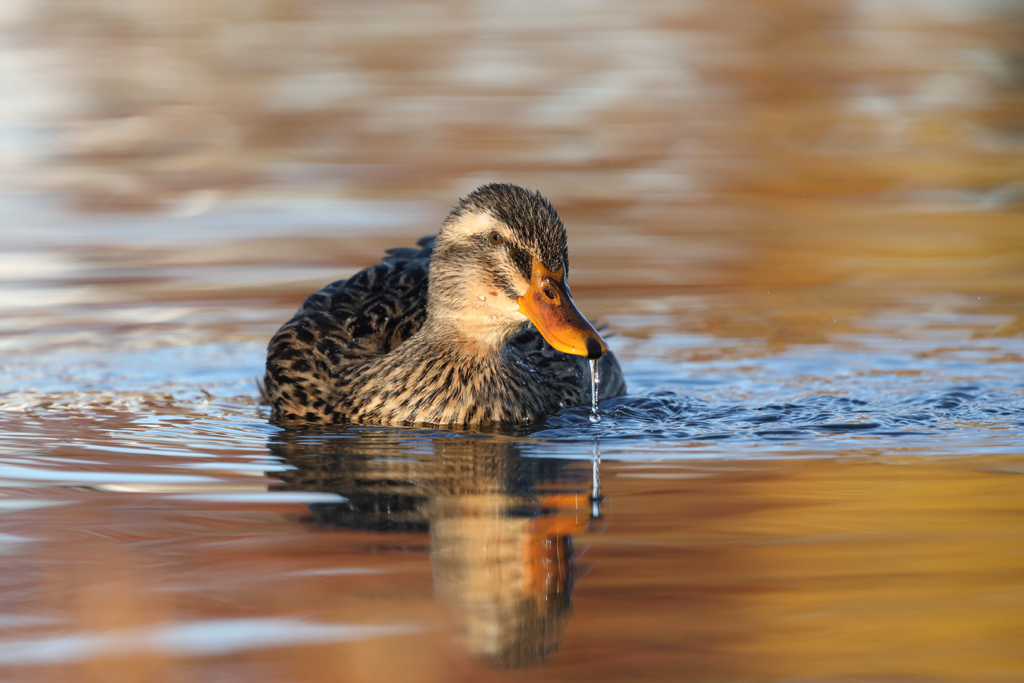
The lighting was in that brief window for foliage reflection when this female Mallard began swimming toward me while dabbling at the surface. I caught this photo with a drip of water coming from her bill while she was highlighted by the autumn color on the water.
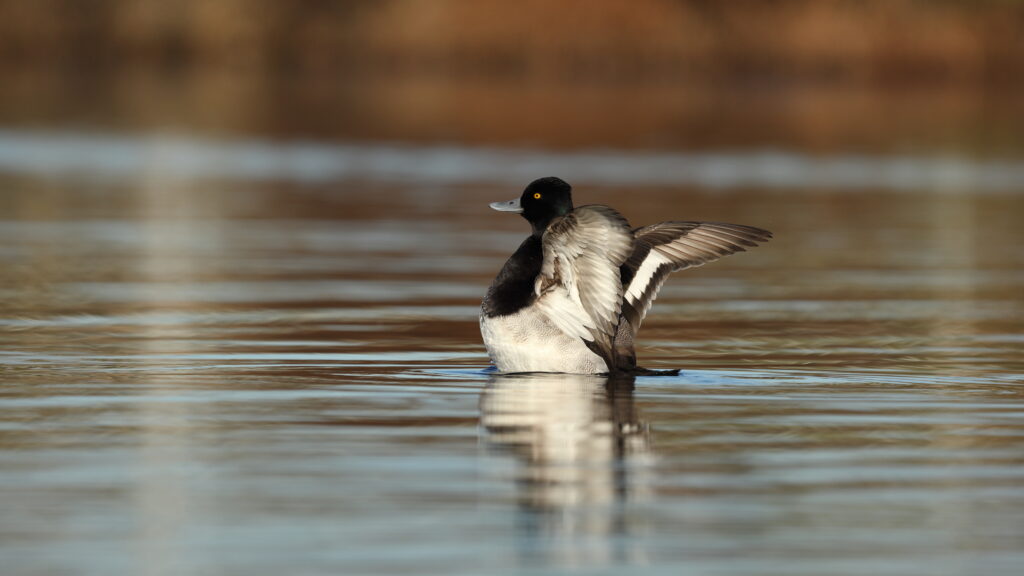
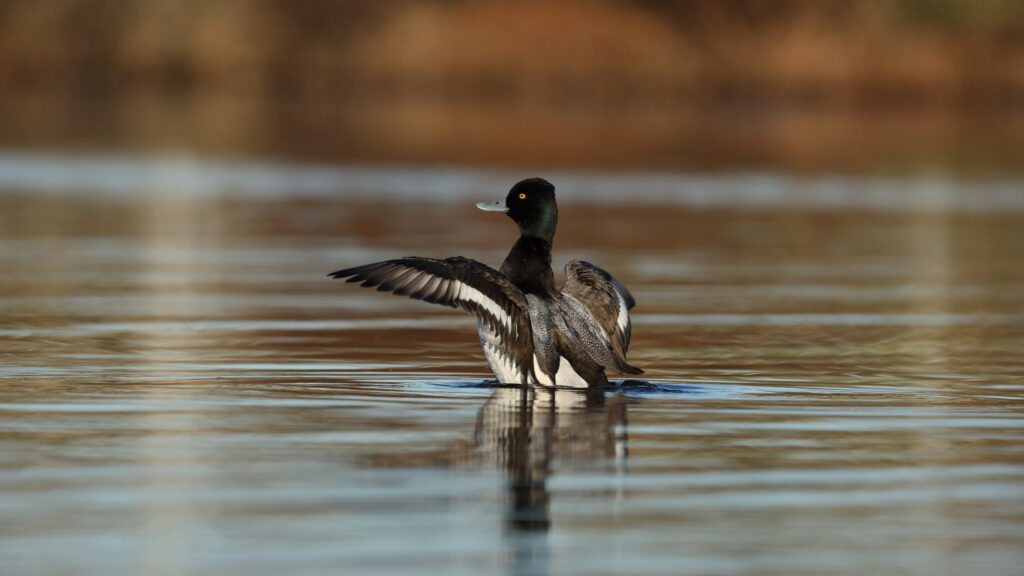
Male Lesser Scaup in a post preen “raise and flap” when they flap off excess water before settling their feathers back into place.
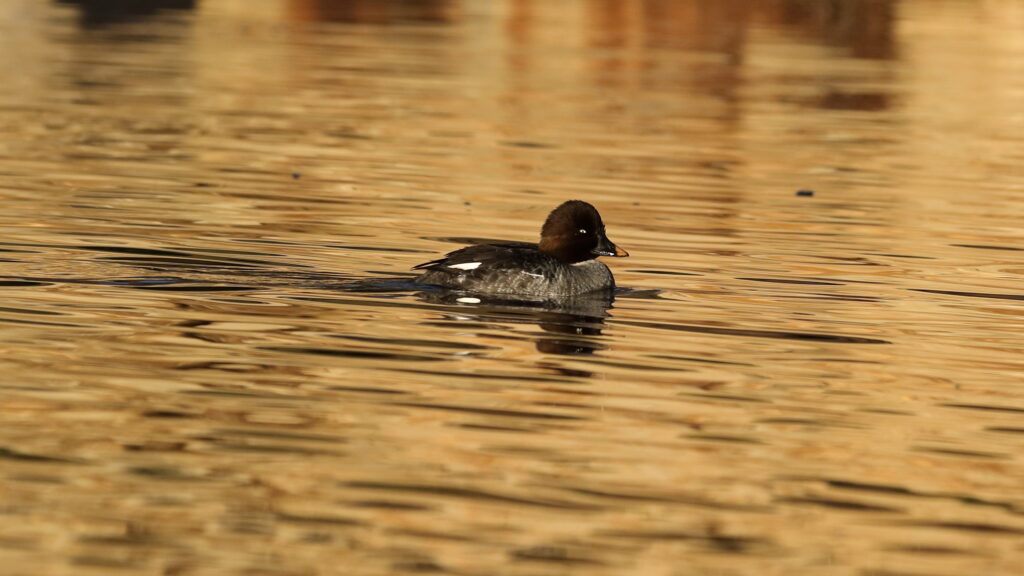

In mid-December I was excited to see via eBird that a Common Goldeneye was at Hall Office Park. I had never seen one in Collin County.
The office park’s buildings, public art, and foliage reflected nicely during golden hour creating varying patches of color.
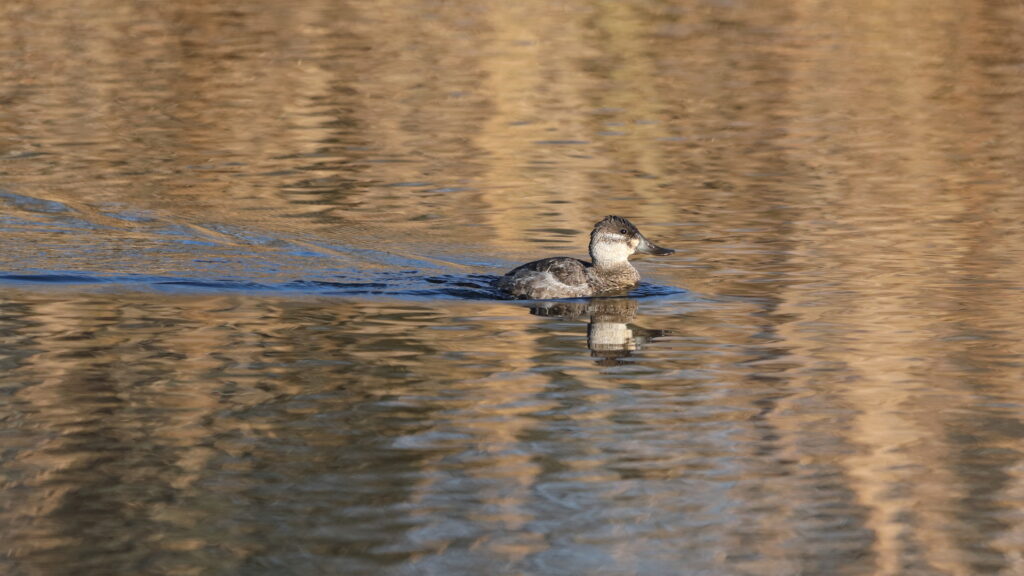
Ruddy Ducks are one of two Oxyurini (stiff-tailed ducks) that occur in North America. These small diving ducks always seem to be further out in deeper water or resting during the day with their bills tucked in. This is because they are more active at night when they prefer to feed.
This female Ruddy Duck at Frisco Commons was very active and the water reflected the winter color of the cattails.
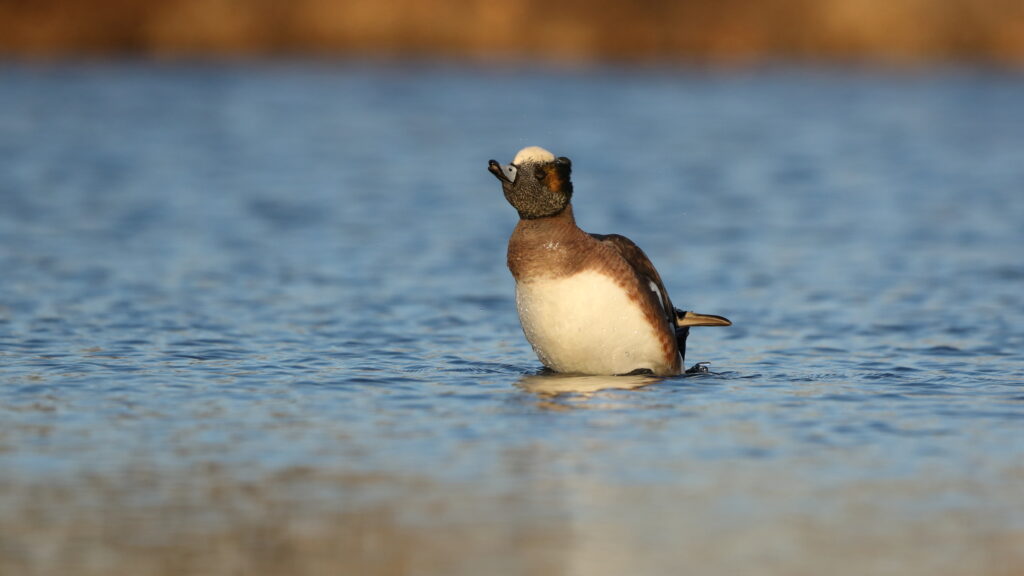

The plumage of the male American Wigeon is a golden hour treat. Their green head stripe can show a copper/bronze in the right lighting.
This one lowered his head and gave a post preen “raise and shuffle” before resuming foraging.
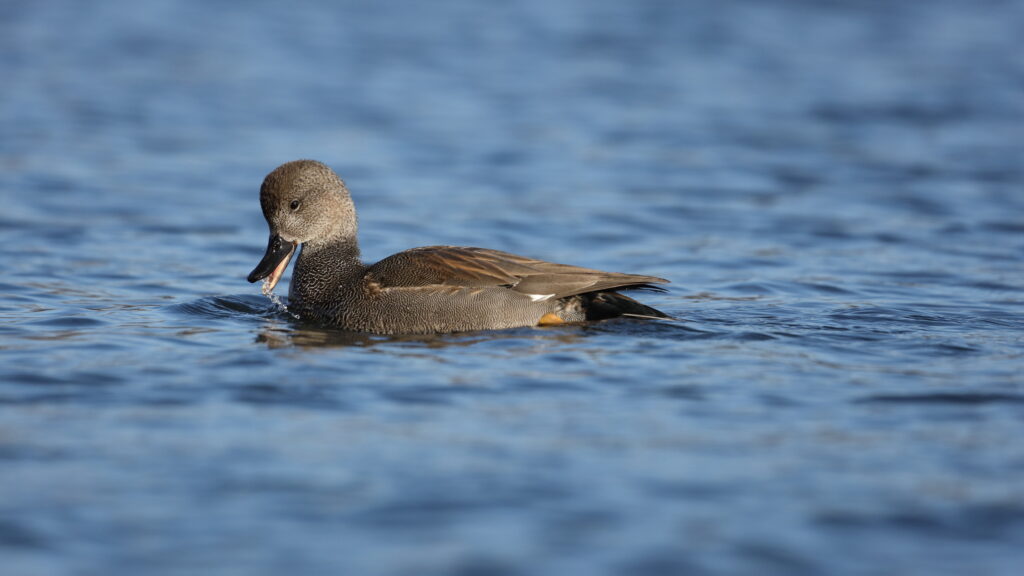
Male Gadwall dabbling as it swam across the pond.

Though not a duck, the small Pied-billed Grebe is too often overlooked. Their calls are one of the coolest sounds when exploring around water. A few of them were in the raft of ducks and a couple were within about five feet of the shore. Cornell calls them “part submarine” because they can trap water between their feathers to change their buoyancy and spend considerable amounts of time submerged.
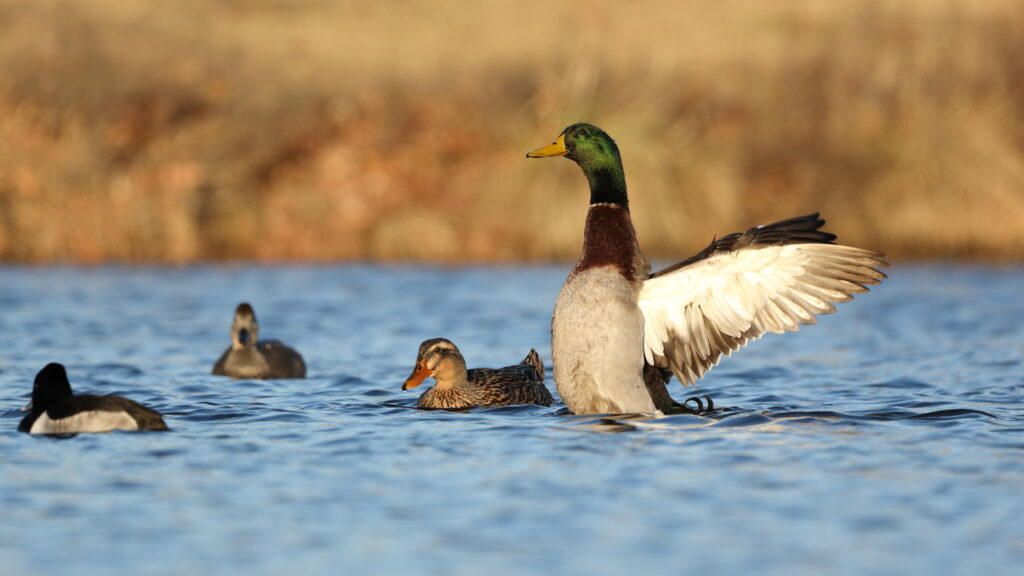
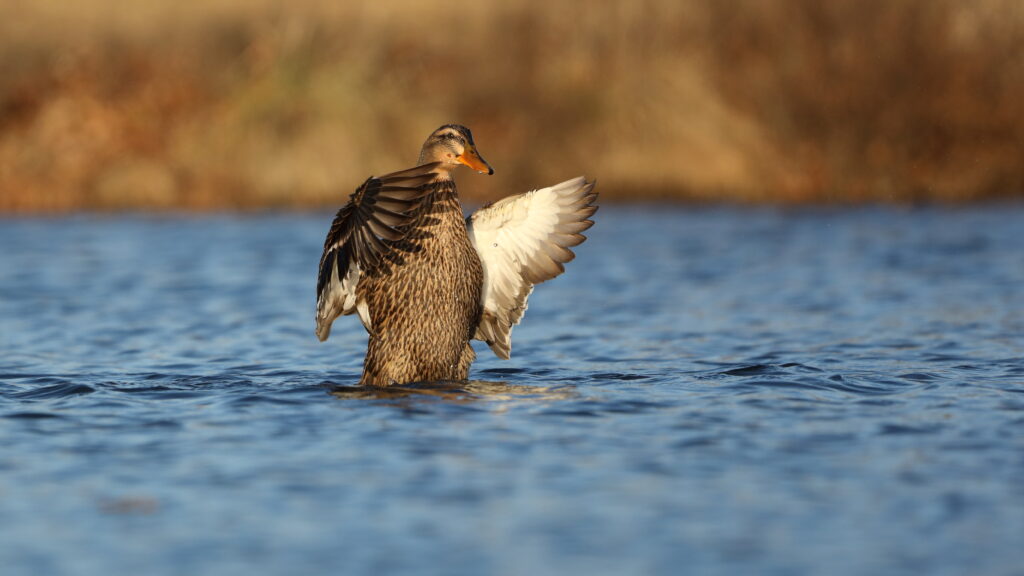
Female and male Mallard in a “raise and flap.”
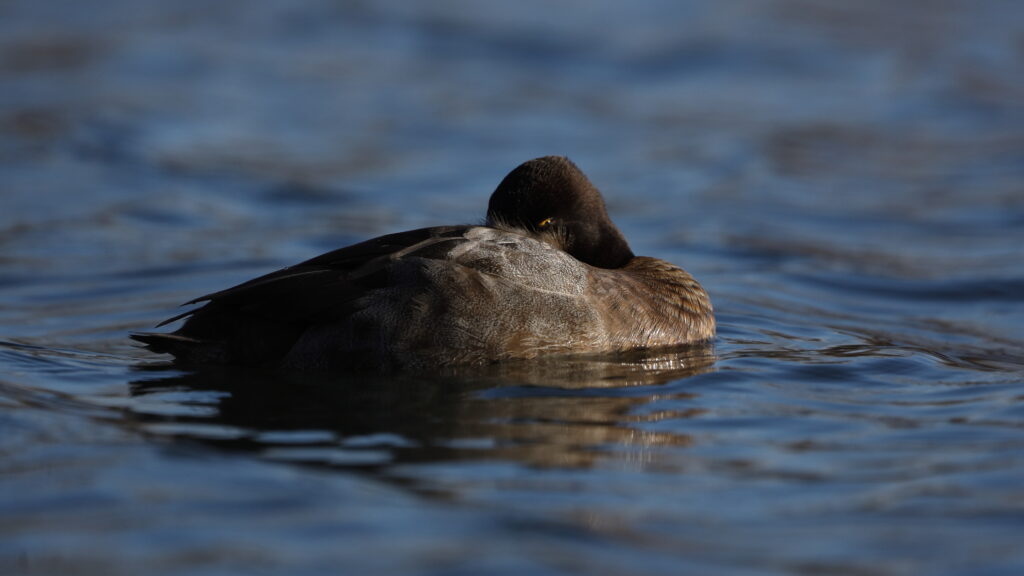
My favorite shot taken at the end of one visit to Russell Creek. Most of the ducks were beginning to rest after a morning of feeding.
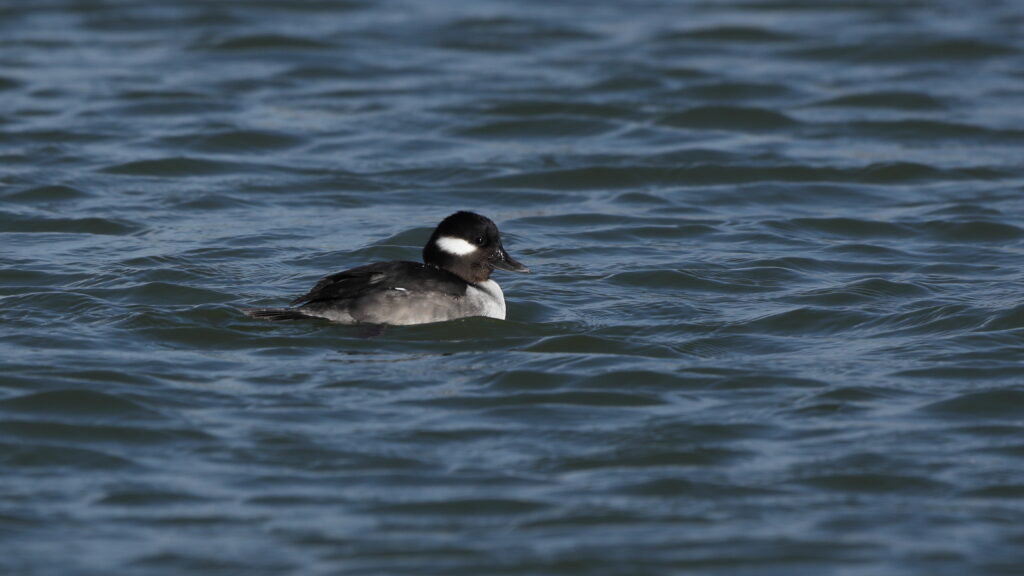
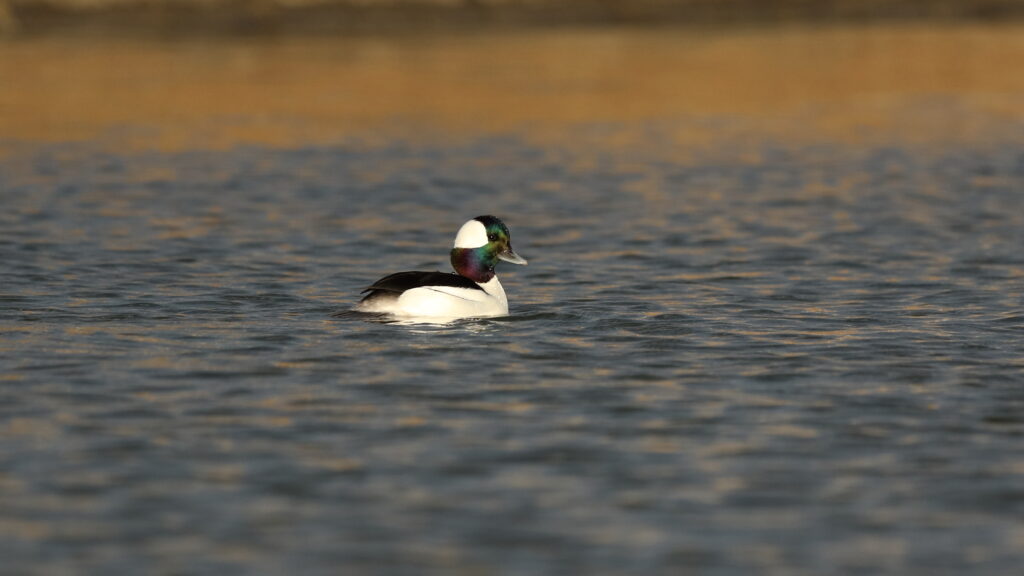
Buffleheads, a small diving duck, are found wintering in our area in small numbers. The dark plumage of the female with the white cheek patch, to me, rival the female Lesser Scaup in simplistic beauty. The males with large white spots on the head and side make them difficult to photograph. In the correct lighting, the iridescent green and purple show on their heads.
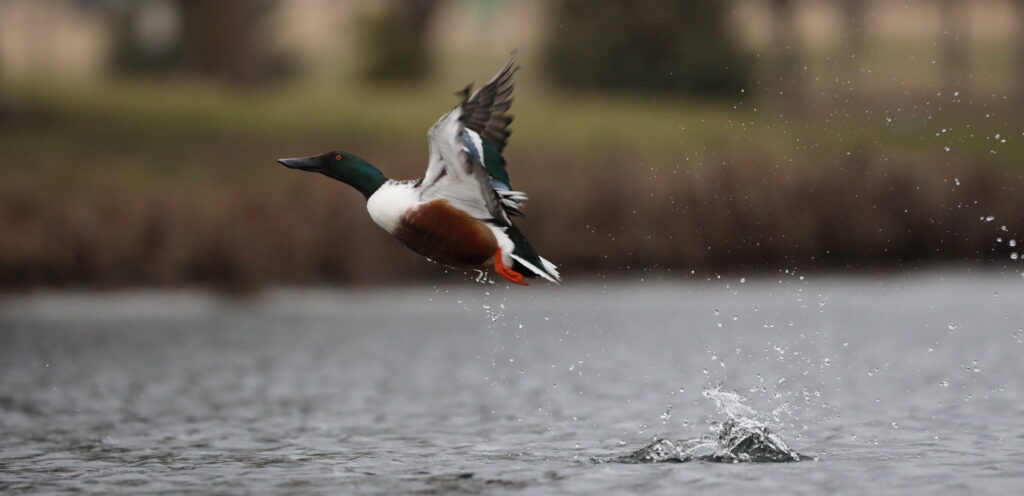
By mid-February, the demographic of the Russell Creek pond had shifted to containing many Northern Shovelers. They were quite vocal and engaged in courtship displays. This included males making jump-flights toward the female after calling.
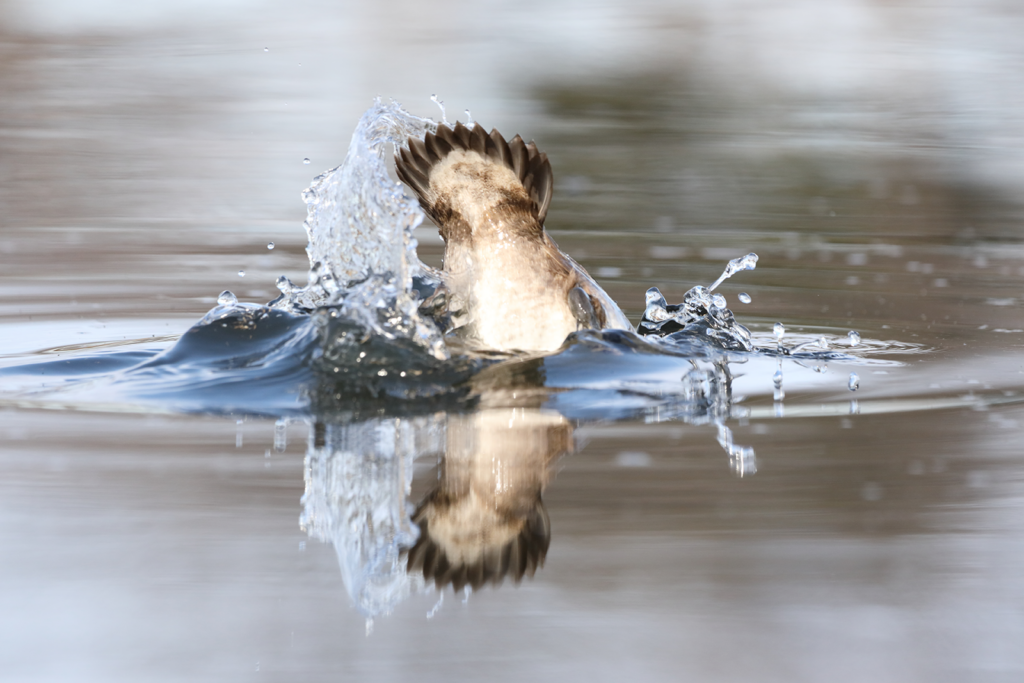
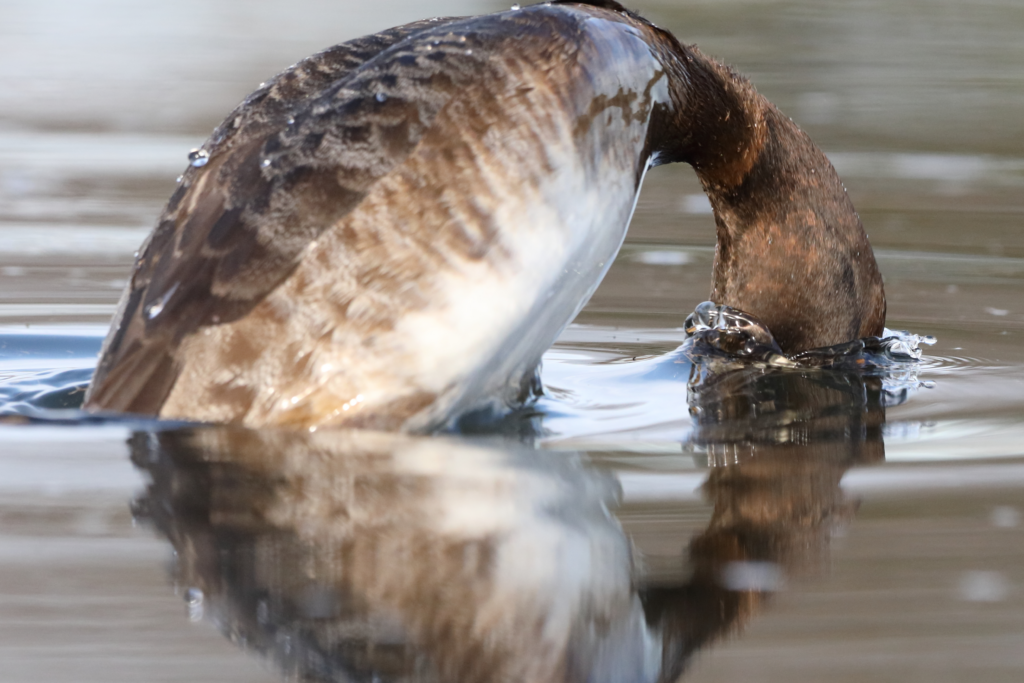
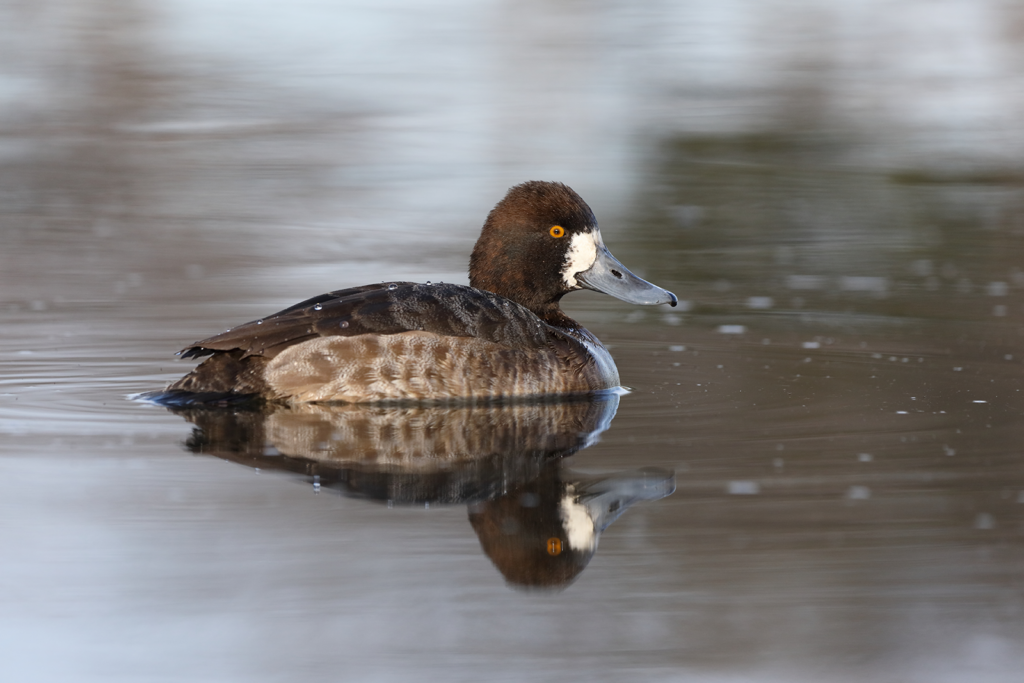
Female Lesser Scaup diving for food a few feet from shore.



